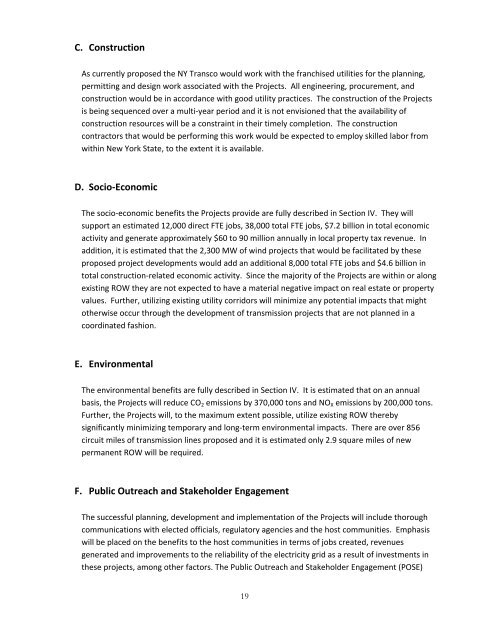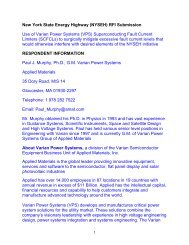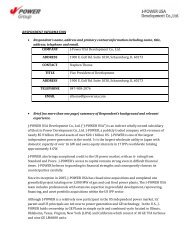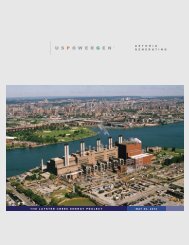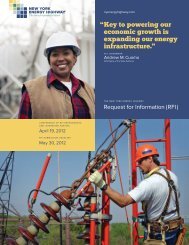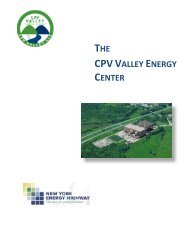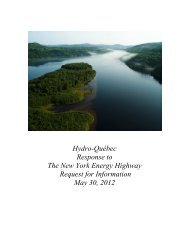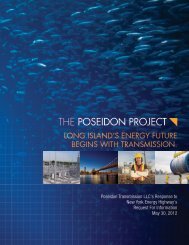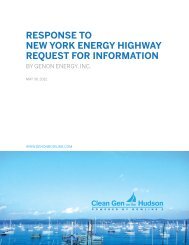New York Transmission Company - Energy Highway
New York Transmission Company - Energy Highway
New York Transmission Company - Energy Highway
Create successful ePaper yourself
Turn your PDF publications into a flip-book with our unique Google optimized e-Paper software.
C. Construction<br />
As currently proposed the NY Transco would work with the franchised utilities for the planning,<br />
permitting and design work associated with the Projects. All engineering, procurement, and<br />
construction would be in accordance with good utility practices. The construction of the Projects<br />
is being sequenced over a multi-year period and it is not envisioned that the availability of<br />
construction resources will be a constraint in their timely completion. The construction<br />
contractors that would be performing this work would be expected to employ skilled labor from<br />
within <strong>New</strong> <strong>York</strong> State, to the extent it is available.<br />
D. Socio-Economic<br />
The socio-economic benefits the Projects provide are fully described in Section IV. They will<br />
support an estimated 12,000 direct FTE jobs, 38,000 total FTE jobs, $7.2 billion in total economic<br />
activity and generate approximately $60 to 90 million annually in local property tax revenue. In<br />
addition, it is estimated that the 2,300 MW of wind projects that would be facilitated by these<br />
proposed project developments would add an additional 8,000 total FTE jobs and $4.6 billion in<br />
total construction-related economic activity. Since the majority of the Projects are within or along<br />
existing ROW they are not expected to have a material negative impact on real estate or property<br />
values. Further, utilizing existing utility corridors will minimize any potential impacts that might<br />
otherwise occur through the development of transmission projects that are not planned in a<br />
coordinated fashion.<br />
E. Environmental<br />
The environmental benefits are fully described in Section IV. It is estimated that on an annual<br />
basis, the Projects will reduce CO 2 emissions by 370,000 tons and NO X emissions by 200,000 tons.<br />
Further, the Projects will, to the maximum extent possible, utilize existing ROW thereby<br />
significantly minimizing temporary and long-term environmental impacts. There are over 856<br />
circuit miles of transmission lines proposed and it is estimated only 2.9 square miles of new<br />
permanent ROW will be required.<br />
F. Public Outreach and Stakeholder Engagement<br />
The successful planning, development and implementation of the Projects will include thorough<br />
communications with elected officials, regulatory agencies and the host communities. Emphasis<br />
will be placed on the benefits to the host communities in terms of jobs created, revenues<br />
generated and improvements to the reliability of the electricity grid as a result of investments in<br />
these projects, among other factors. The Public Outreach and Stakeholder Engagement (POSE)<br />
19


